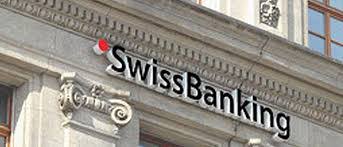If you’re paying interest on a credit card, you may have heard the word “finance charge.” There’s this myth about a finance charge vs. credit card. You’ve probably encountered companies that bill you a finance charge instead of a monthly interest rate. A finance charge and interest rate must be presented to you in the form of an APR, or annual percentage rate. This may give the impression that the two are the same, but they are not. Hence, in order to compute a finance charge, you need to know your annual percentage rate (APR), the amount of money you owe, and how long you have to pay it back.
What Is a Finance Charge?
Accounting and finance terms define a finance charge as the total amount of fees you pay to borrow money. Finance charges include interest and other fees, which you must pay in addition to the loan’s due date. However, some businesses and lenders may only provide you with a finance charge rather than an interest rate.
When it comes to your finances, like a payday loan or buying a used car on credit, a “finance charge” is a set amount of money you have to pay for the loan. Some lenders will charge you this fee whether or not you pay off your loan early. When you pay an interest rate, you will pay less to borrow more money if you pay it off quickly. However, the finance charge vs. interest is debatable. Whether a straight finance charge, an interest rate, or a combination of interest and fees is preferable.
What Is Another Word for Finance Charge?
Interest is defined in financial accounting as any fee or cost associated with borrowing money. Interest is synonymous with finance charge.
What Is an Example of a Finance Charge?
A financing charge is the cost of borrowing money and is applied to numerous types of credit, including car loans, mortgages, and credit cards. Interest rates and late fees are common examples of financing costs.
How Do Finance Charges Work?
For a lender to profit from the use of their money, they charge interest. A borrower’s creditworthiness determines the range of interest rates that can be charged for commoditized credit services like car loans, mortgages, and credit cards. Many countries have laws limiting the maximum annual percentage rate (APR) that can be charged on a particular type of credit. However, many of these limits still allow predatory lending practices, such as APRs of 25% or higher.
Finance charges are a way of rewarding the lender for extending credit to a borrower. These fees can include one-time fees, such as a loan origination fee, or interest payments, which can be amortized monthly or daily. Finance charges can differ from one product to the next or from one lender to the next.
There is no single formula for determining the appropriate interest rate to charge. A customer may be eligible for two similar products from two different lenders, each with its own set of finance charges.
Interest Rate vs. Finance Charge
The difference between a finance charge vs. interest is debatable. The interest rate is one of the most common types of finance charges. With this, a percentage of the money the lender has given the borrower can be considered a profit for him or her. Interest rates can vary depending on the type of financing obtained and the creditworthiness of the borrower. Secured financing, which is typically secured by an asset such as a home or vehicle, typically has lower interest rates than unsecured financing, such as a credit card. The lower risk associated with a loan backed by an asset is the most common reason for this.
To allow the borrower to complete a transaction in a foreign currency, all finance charges on credit cards are expressed in the card’s base currency, including those that can be used as international charges.
What Is the Difference Between Finance Charge and APR?
The annual percentage rate (APR) represents the overall cost of borrowing money, which includes interest and some fees. While finance Charge is the overall cost, expressed in dollars and cents, of borrowing money, including interest and fees. Any potential late fees are not included in the finance charge.
Finance Charge Calculation
Credit card companies can calculate finance charges using one of six different methods.
- Average Daily Balance: This is the most common method, and it is based on the daily average of what you owe during the billing cycle.
- The finance charge on each day’s balance is calculated by the credit card company using the daily interest rate.
- Adjusted Balance: This is the difference between your opening balance and your monthly payment. This method results in the lowest finance charge because there are no purchases in the balance.
- Double Billing Cycle: It uses the average daily balance of the present and previous billing cycles for a double billing cycle. It is the most costly method of finance charges. Although the United States prohibits this practice in the Credit CARD Act of 2009.
- Ending Balance: The finance charge is calculated depending on your balance at the end of the current billing cycle.
- Previous Balance: It calculates the previous billing cycle’s final balance. Avoid credit card companies that use this method because it has the highest finance charge of any method still in use.
How Do You Calculate the Finance Charge?
By following the steps below, you can quickly estimate the finance charge on your credit card or any other type of financial instrument involving credit. Assume you want to know the finance charge on a $1,000 credit card balance with an APR of 18% and a billing cycle length of 30 days. Convert the APR to decimal. APR / 100 = 18 / 100 = 0.18
Calculate the daily interest rate using the following formula
APR / 100 / 365 = daily interest rate per day
Interest rate per day = 0.18 / 365 = 0.00049315
Calculate the daily finance charge. The daily finance charge equals the carried unpaid balance multiplied by the daily interest rate. 1,000 * 0.00049315 = 0.49315.
To calculate the finance charge for a billing cycle. The finance charge is equal to the daily finance charge multiplied by the number of days in the billing cycle. 0.049315 * 30 = 14.79 finance charge
To summarize, the finance charge formula is as follows:
Finance charge = unpaid balance carried * APR / 365 * Billing Cycle Days
How to Avoid Finance Charges on a Credit Card
There are several ways you can avoid a finance charge on a credit card. Here are some simple tips to consider.
#1. Make the Most of Your Grace Period.
A large percentage of credit cards provide a grace period on purchases. If your credit card has one, it usually runs from the end of your billing cycle to the due date of your payment. The law requires you to receive your credit card payment at least 21 days before it is due. The length of a grace period can vary from card to card, according to April Lewis-Parks, director of education for credit counseling organization Consolidated Credit. Many credit card companies offer grace periods of 21 to 25 days.
You can pay off your statement balance in full during the grace period to avoid interest charges. By doing so, you can enjoy the benefits, such as points, miles, and comfort, without having to pay out of pocket. However, if you still have a balance from the previous month on your statement, you may still be liable for interest.
If you miss a payment, you may lose your grace period, resulting in interest accruing immediately on each card purchase. If this occurs, you must pay your balance in full to regain the grace period. Cash advances and balance transfers are not subject to grace periods. Balance transfers can negate the benefit of a grace period on new purchases. And every new card purchase will begin accruing interest immediately until you pay off your balance transfer in full.
#2. Make Use of a 0% APR Promotion.
Some credit cards give new cardholders an initial 0 % APR promotion that waives interest charges for a particular timeframe. You will not incur any finance charges in the form of interest if you pay off your balance before the promotional period ends. The only interest you’ll pay is on the amount you owe.
This is in contrast to the deferred interest promotions offered by some store credit cards and in-store financing deals. Ordinarily, if you pay off the purchase in full before the promotion expires, you will owe no interest. As long as you don’t have a balance, you won’t be charged interest on it.
A 0% APR promotion is an excellent way to avoid paying interest. Lewis-Parks suggests that you keep track of any balance transfer fees if you are transferring a balance. According to her, you should know how much more you’ll be charging yourself to reach a 0% interest rate.
Finally, Philpot advises consumers to be aware that these promotions may tempt them to spend more money than they normally would. If you believe this is likely, it is best to avoid them.
#3. Avoid Certain Activities.
You may want to avoid balance transfers, cash advances, and purchases made outside of the United States because many cards charge fees for these transactions.
For example, some balance transfer credit cards will waive the balance transfer fee for new cardholders for a limited time. Foreign transaction fees may not apply to all credit cards in use for travel.
#4. Always Read The Contract.
Understanding the costs associated with your credit card account is critical if you use one. Because finance charges include interest and transaction fees, read the contract on card fees and interest charges to understand when they apply.
Is Finance Charge the Same as Monthly Payment?
Multiply your monthly payment by the number of months for which you will be making payments. Subtract the original principal (the amount you borrowed to purchase the car) from this total. This is your finance charge, or the total amount of interest you will pay.
Conclusion
Once you understand the finance charge vs interest in your APR, you’ll be on your way to avoiding them. Consumers who have long-term loans, such as auto loans or mortgages, can significantly reduce the total amount of finance charges in the form of interest by making extra payments to reduce the outstanding balance on the principal loan amount.
Finance Charge FAQs
What is the finance charge on a loan?
A finance charge loan is the total amount of interest and loan fees you would pay over the life of the mortgage loan. This assumes you keep the loan for the entire term until it matures (when the final payment is due) and includes all pre-paid loan charges.
What is the formula for calculating monthly finance charge?
Your monthly finance charge is equal to your annual percentage rate (APR) divided by one-twelfth. This is the most commonly used method.
Do I have to pay finance charge?
If you don’t pay off your loan in full within the grace period, you’ll have to pay a finance charge. Even if you pay the amount in full by the due date, you must pay a finance charge in some cases, such as credit card cash advances.






